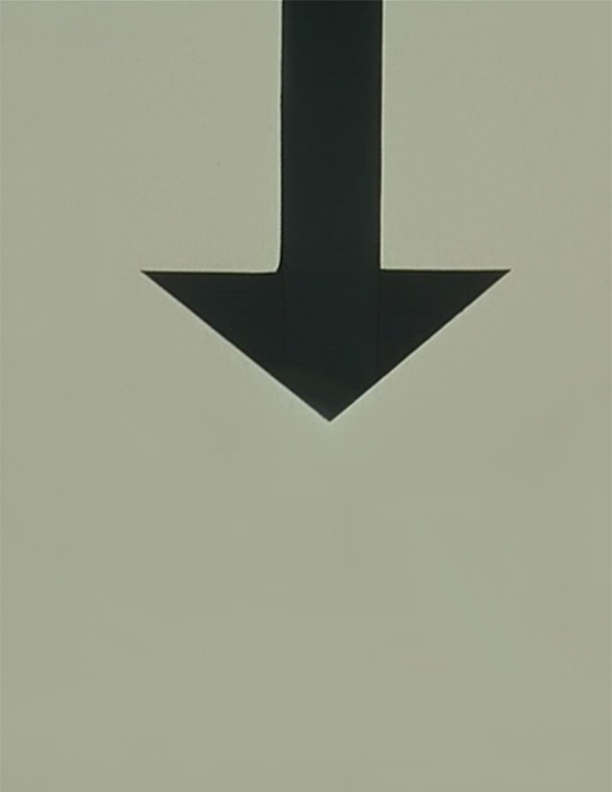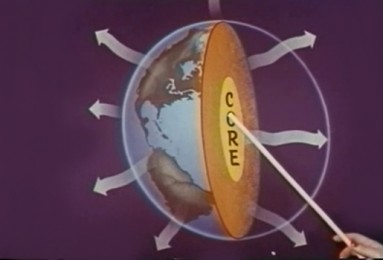Can DNA tests really tell us anything about our ethnic identity?
In a short film on the website of African Ancestry, a “genetic genealogy” company that targets a primarily African-American clientele, actors respond to a series of questions asked by an off-screen narrator. In these staged man-on-the-street interviews, we meet a fair-skinned white woman stretching before a run, a Latino man sawing wood at a carpentry bench, and an African-American barber, among a handful of others. Asked where they’re from, the characters answer with the cities and states in which they were born. Then the narrator asks about their deeper origins: “But what about your family, your ancestors—where are they from?” “They’re from Ireland,” the white woman offers perkily. The Latino man explains that his relatives are Mexican. Another man tells us that his family is “mostly from India.” The black characters, however, are vexed by the question. Most make diffident admissions of ignorance. The desultory answer of a school-age boy: “Somewhere in Africa, I guess.”
African Ancestry, which provides mitochondrial and Y-chromosome DNA tests that provide information about maternal and paternal lines of descent, respectively, claims to have “freed” more than 30,000 families with the results of these tests. Among the numerous advertised benefits are the opportunities to finally learn which country in Africa your family “comes from” and to establish “a cultural identity for you and your kids.” The insinuation is that because of slavery, blacks know less about their ancestors. Yet few people of any race know much about their forebears. It’s unlikely, for example, that the “Irish” girl in the video would be able to name a single ancestor from Ireland. Never mind: If she could, the company suggests, she would be saying something important—something fundamental—about herself. And so the video’s deeper implication is that we can answer the complex, emotional question of personal and ethnic identity—who am I—with an empirical test describing who our ancestors are.
This, at least, is the information the tests appear to give. What they actually provide is something far more limited: the speculative origin of only a small portion of our genetic material. It is the nature of genealogies, after all, to continually branch—that is the very reason we refer to them as family “trees.” As you count your forebears further back in time, the number doubles at each generation: You have two parents who each had two parents and so on. Go back 10 generations (roughly the year 500 B.C.) and the number of your ancestors is larger than the population of the planet. One fact reins in this exponential growth. Further in the past, the world’s population was smaller. Because the number of our ancestors can’t exceed the number of people who have ever lived, some individuals make multiple appearances in our family trees. And those individuals must also appear in everyone else’s family trees. It is as though each of us is a fisherman casting his net into a sea of ancestors, dragging in however many grandparents, great-grandparents, and so on. As long as the sea is large, it isn’t likely that any two fisherman’s nets will become entangled. But as we travel further back in time to more remote ancestors, the sea dries up until all that is left is a small pool, narrower than the breadth of each net. Now every fisherman is casting into the same pool, dragging up the same ancestors. What’s more, that sea dries up rather quickly. In fact, there is likely a point in time within the past 10,000 years when some fraction of the population comprised the ancestors of everyone alive today, and the remaining fraction left no descendants in the present. Go back far enough, and all our family trees completely overlap.
Yet even though we all have the same ancestors if you reach deep enough into the past—even though the story our DNA tells is ultimately one of inclusion—genealogies tend to get used as a means of creating exclusive group identities, for example by demonstrating a connection to a single individual or tribe. These group identities presume a level of similarity among the members. We can learn something about ourselves, the thinking goes, by identifying the group we belong to. But what we really learn from genealogies is that there is no such group. Our genomes are made of long strings of molecules tangled into structures called chromosomes. They are physical objects that take up space, that can be weighed. They are finite. There is only so much room in a genome for the contributions of all our ancestors. The further back we go in time, the less any single one of our ancestors is likely to have contributed to our genomes. What’s more, the genetic contribution a single ancestor has made to any one of us will vary widely.
A true accounting of our genealogy, then, would record not only all of our ancestors but what genetic material, if any, we’ve inherited from each of them. While this is impossible for the whole genome, some forms of DNA are special. Unlike the rest of our genome that resides in the nucleus of every cell, mitochondrial DNA is held in the mitochondria, the organelles that provide energy for the cell. When sperm and egg join at fertilization, the sperm’s mitochondria are chemically tagged for destruction. As a result, you inherit this form of DNA only from your mother, who received it from her mother and so on. Similarly, the Y-chromosome, which is found only in men, is inherited exclusively from the father.
Thanks to the sex-specific inheritance of these parts of the genome, we can learn more readily about the matrilineal and patrilineal lines of our ancestry than any other lines. Because of this, these lines represent “privileged” lines of ancestry in modern gene-based genealogical research. Yet they are only two of the vast number that exist. Consider, for example, your mother’s father’s mother’s father’s mother’s line: Who knows what influence this great-great-great-grandmother may have had on who you are today?
Giving priority to particular lineages in our ancestry is nothing new. Surnames similarly privilege a specific line of ancestors, and for many, the inheritance of wealth and status along these lines has been significant in determining the circumstances of their lives. These privileged lines are also a primary basis for constructing individual or national identities, as the African Ancestry video suggests. But simply because we’ve singled them out doesn’t mean they bear particularly more weight. A child may carry her father’s surname, but it is unlikely that she considers herself any less her mother’s daughter.
***
H.L. Mencken once wrote that the “quasi-science of genealogy” was “directed almost exclusively toward the establishing of aristocratic descents for nobodies.” Across the pond, genetic-ancestry companies seem happy to provide just this service. A trio of related companies, BritainsDNA™, ScotlandsDNA™, and IrelandsDNA™, founded by the historian Allistair Moffat under the scientific direction of Jim Wilson, a geneticist at the University of Edinburgh, aims to achieve “a new understanding of … a people’s history.” To date, they’ve been better known for discovering exotic genealogical connections. In 2012 they reported that actor Tom Conti was a relative of Napoleon Bonaparte. Later Moffat claimed to have identified British descendants of the Queen of Sheba. In the 2013 televised documentary Meet the Izzards, comedian Eddie Izzard was told that he is a descendant of Viking invaders to the British Isles.
But there are no genes that uniquely identify specific populations of humans. The most we can do is locate certain variants of genes that are more or less common, or even absent, in groups that have historically interbred very little. When two populations show similar frequencies for variants of a gene, it might reasonably be inferred that there has been interbreeding between those populations at some point.
If we observe a gene variant in a population, and we know from recorded history that this population was once invaded by another group of people among whom that gene variant is very common, we might infer that this variant entered the population in numbers with the invaders. The more samples we have, the stronger we can make these kinds of claims. While the prevalence of genetic similarities between populations is reasonable evidence for historical connections, telling any one person the story of how they inherited particular genes is nearly impossible. What looks like Viking ancestry may as well be a forgotten Norwegian great-great-grandfather.
My own family history offers an example. In 1574, amid the Wars of Religion, a Huguenot nobleman named Frederic de la Tranche, “finding he must renounce either his conscience or his station,” fled war-ravaged France for the relative safety of Protestant England. He settled in Northumberland, where over time his descendants—with the anglicized surname of Trench—rose to “the highest rank among the noblest in their land of adoption.” I was born in Brooklyn some 400 years later, to a father who had emigrated from Belize and a mother whose parents had emigrated from Belize and Suriname. My family’s immediate roots are in colonial backwaters—tranquil, obscure places far from the clamor of European history. But my maternal grandmother was born a Tranch. Her father, born in 1895 in a far-flung corner of the British Empire, was a patrilineal descendant of pious Frederic. We have almost nothing in common, but a not-so-winding genealogical path leads you directly from Monsieur de la Tranche to me.
All of us have similarly improbable ancestors. The Vikings who pillaged Britain shared ancestors in common with today’s Khoisan of the Kalahari. The young black boy in the African Ancestry ad has ancestors who were peasants in Roman Gaul. The branches of all our family trees eventually tangle.
Yet genealogies as we imagine them tell us something like the opposite. They confirm our fantasies of tribal identity, promising a relation to particular individuals who have somehow bestowed upon us through the ages the attributes which set us apart from others. These imagined clans have little basis in reality, and like the mythic genealogies once drawn for ancient kings, they are not intended to accurately represent history. To the extent that any of us belong to racial or cultural groups, these are transient identifications. Migration, the happenstance of history, and the gene shuffling of sexual reproduction will create new groups, new peoples, just as has been the case for the past 200,000 of our species.
In DNA USA, a recent book by Brian Sykes, the founder of Oxford Ancestors™ and a geneticist, the author relates the story of a disgruntled customer who contested the results of a test he’d ordered. The man’s Y-chromosome haplotype indicated supposed “Viking” ancestry. The customer, on the other hand, was sure he was a Celt, due to his dark hair and small stature. He insisted that the results were wrong and demanded his money back. After some discussion, Sykes finally relented. “DNA always struggles to reverse the deepest of psychological perceptions or identity associations,” he explains.
Sykes is right to note that there is often a clash between genetic evidence and what people desire that evidence to reveal. But he might also have told the customer that the man is neither a Viking nor a Celt but a resident of the British Isles whose ancestry is includes all kinds of people who arrived there in the past. He might have made clearer the difficulty of connecting genetic sequences to the linguistic or cultural groups we’ve identified in history. We inherit genes, not identities. Culture is not contained in the double helix but arises from our interactions with others. If we want to know who we really are we’ll have to look beyond our chromosomes to the company we keep.


